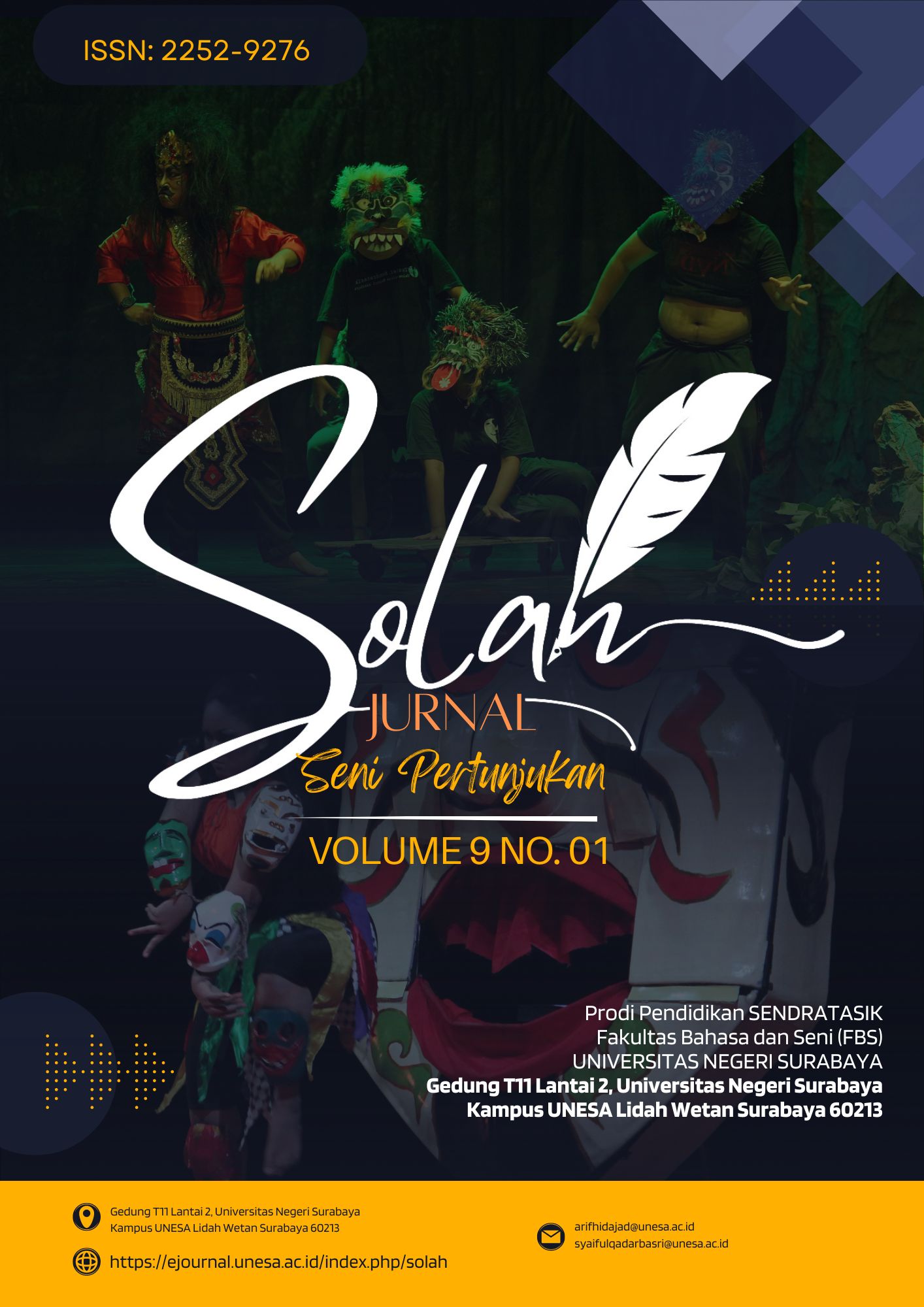PERWUJUDAN PERMAINAN TRADISIONAL PETAK UMPET MELALUI KARYA TARI SKIT
Keywords:
Permainan, tradisional, petak umpet, skit, dramaticAbstract
Hide and seek is one type of traditional game in Indonesia. But with the development of the times, the game of hide and seek slowly began to disappear. There are many factors that influence the lack of existence of hide and seek games, such as technological advances. Based on this phenomenon, the choreographer raised the topic of hide and seek games to introduce the younger generation to the game of hide and seek. Scyth's dance work is a depiction of the traditional game of hide and seek. The content of this dance work is a working idea that is revealed into 5 sub-themes based on the big theme in the hope that it can communicate the big theme of children's play to connoisseurs of works and can also be an inspiration for connoisseurs of works.
In Skit's dance work, the choreographer uses choreography theory by Alma Hawkins (1990: 20) as a reference in the formation of the work. The choreographer also used the concept of Homo Ludens (1938) which said that traditional games are games that will incorporate culture and character against the perpetrators. By using theories and concepts in cultivation, choreographers have created traditional games in the form of dance works and in accordance with the concepts that have been designed. The form of this dance work is in the form of dramatic dance that is realized in the structure depicted in the scenario and elements according to the sub-themes in each scene. According to the dramatic plot, it was found that the dramatic form design of the dramatic form design in this dance work is a double cone.
Downloads
Downloads
Published
How to Cite
Issue
Section
 Abstract views: 147
,
Abstract views: 147
, PDF Downloads: 793
PDF Downloads: 793



